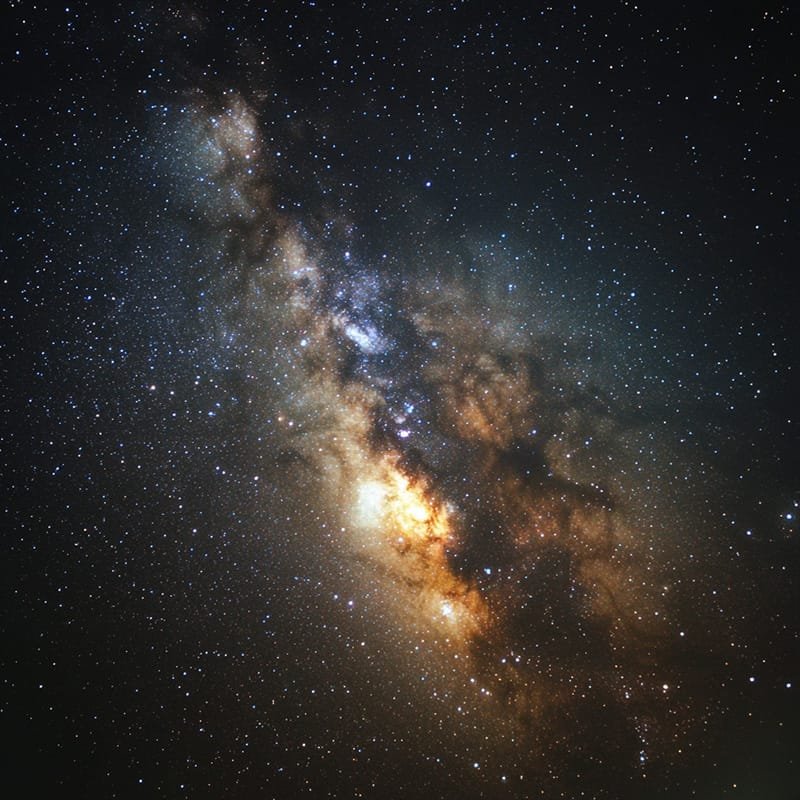Jupiter, the largest planet in our solar system, has long fascinated astronomers and scientists alike. Named after the Roman king of gods, Jupiter has played a significant role in our understanding of the universe. With its immense size and unique features, Jupiter offers a wealth of information about the formation and evolution of our solar system.
One of the most notable features of Jupiter is its size. It is more than 11 times the diameter of Earth, making it the largest planet in our solar system. Its mass is also more than 300 times that of Earth, making it twice as massive as all the other planets combined. This immense size gives Jupiter a strong gravitational pull, which has a significant impact on its surrounding environment.
Another prominent feature of Jupiter is the Great Red Spot. This massive storm has been raging on Jupiter for centuries and is larger than Earth itself. It is believed to be a high-pressure system that has been sustained by the planet’s strong winds. The Great Red Spot offers valuable insights into the dynamics of Jupiter’s atmosphere and weather patterns.
Key Takeaways
- Jupiter is the largest planet in our solar system and has a unique set of features.
- Telescopes are essential for observing Jupiter and its moons, and can reveal details about the planet’s atmosphere and surface.
- Jupiter is over 365 million miles away from Earth, making it difficult to observe without the right equipment and atmospheric conditions.
- Atmospheric conditions play a crucial role in observing Jupiter, as they can affect the clarity of the planet’s features.
- Jupiter’s four largest moons, the Great Red Spot, and other prominent features can be observed through a telescope with the use of filters.
Understanding the telescope and its capabilities
Telescopes have revolutionized our understanding of the universe by allowing us to observe celestial bodies in great detail. These optical instruments work by collecting and focusing light, enabling us to see objects that are too far away or too faint to be seen with the naked eye.
There are several different types of telescopes, each with its own strengths and weaknesses. Refracting telescopes use lenses to gather and focus light, while reflecting telescopes use mirrors. Refracting telescopes are generally better at producing sharp images, but they can be more expensive and have limitations in terms of size. Reflecting telescopes, on the other hand, can be larger and more affordable, but they may require more maintenance.
Telescopes can reveal a wealth of information about celestial bodies, including their size, shape, and composition. By studying the light emitted or reflected by these objects, astronomers can also learn about their temperature, chemical composition, and even their motion through space.
Jupiter’s size and distance from Earth
Jupiter’s massive size and distance from Earth present unique challenges and opportunities for observation. Due to its distance from the Sun, Jupiter receives only a fraction of the sunlight that reaches Earth. This means that it appears much dimmer in the night sky compared to other planets like Venus or Mars.
Jupiter’s distance from Earth also affects our ability to observe it in detail. Even with a powerful telescope, the planet appears relatively small and lacks the sharpness of closer objects. However, advancements in technology have allowed astronomers to capture high-resolution images of Jupiter and study its features in greater detail.
Despite these challenges, observing Jupiter can provide valuable insights into the formation and evolution of our solar system. By studying its composition and atmosphere, scientists can gain a better understanding of the processes that shaped our own planet and others in the solar system.
The role of atmospheric conditions in observing Jupiter
Atmospheric conditions play a crucial role in our ability to observe Jupiter accurately. The Earth’s atmosphere can distort light as it passes through, causing objects to appear blurry or distorted. This effect, known as atmospheric turbulence, can significantly impact the clarity of observations made with telescopes.
To account for atmospheric conditions, astronomers often use techniques such as adaptive optics or image stacking. Adaptive optics systems use deformable mirrors to correct for the distortions caused by the Earth’s atmosphere in real-time. Image stacking involves taking multiple images of an object and combining them to reduce noise and improve clarity.
In addition to atmospheric turbulence, weather conditions on Earth can also affect our ability to observe Jupiter. Cloud cover or poor visibility can hinder observations, making it necessary to wait for clear skies before attempting to observe the planet.
The four largest moons of Jupiter
Jupiter is known for its extensive system of moons, with over 80 known satellites. Among these, the four largest moons of Jupiter, known as the Galilean moons, are of particular interest. These moons were discovered by Galileo Galilei in 1610 and have since been the subject of extensive study.
The four Galilean moons are named Io, Europa, Ganymede, and Callisto. Each moon has its own unique characteristics and offers valuable insights into the formation and evolution of the solar system. For example, Io is the most volcanically active body in the solar system, with hundreds of active volcanoes spewing out lava. Europa, on the other hand, is believed to have a subsurface ocean of liquid water, making it a potential candidate for extraterrestrial life.
Observing these moons can provide valuable information about Jupiter’s gravitational influence and its interaction with other celestial bodies. By studying their orbits and surface features, scientists can gain a better understanding of the dynamics of the Jovian system and its role in shaping the solar system.
The Great Red Spot and other prominent features

One of the most iconic features of Jupiter is the Great Red Spot. This massive storm has been raging on the planet for at least 400 years and is larger than Earth itself. It is believed to be a high-pressure system that has been sustained by the planet’s strong winds.
The Great Red Spot offers valuable insights into the dynamics of Jupiter’s atmosphere and weather patterns. By studying its structure and behavior, scientists can gain a better understanding of how storms form and evolve on gas giants like Jupiter.
In addition to the Great Red Spot, Jupiter is also known for its bands of clouds and storms. These bands are caused by differences in temperature and composition in Jupiter’s atmosphere. By studying these features, scientists can learn more about the composition and dynamics of Jupiter’s atmosphere.
The use of filters in observing Jupiter
Filters can enhance our observations of Jupiter by selectively blocking certain wavelengths of light. This can help to bring out specific features or details that may be difficult to see otherwise.
There are several different types of filters that can be used when observing Jupiter. For example, a red filter can enhance the visibility of the Great Red Spot, while a blue filter can bring out the details in Jupiter’s cloud bands. Polarizing filters can also be used to reduce glare and improve contrast.
By using filters, astronomers can reveal hidden details and gain a better understanding of the composition and structure of Jupiter’s atmosphere.
Comparing Jupiter’s appearance to other planets
Jupiter’s appearance is distinct from other planets in our solar system. Its large size and prominent features make it easily recognizable even to the naked eye.
Compared to other gas giants like Saturn or Uranus, Jupiter has a more pronounced banded appearance. These bands are caused by differences in temperature and composition in the planet’s atmosphere. Saturn, on the other hand, has a more uniform appearance due to its thicker cloud cover.
Jupiter’s size also sets it apart from other planets. Its immense mass and gravitational pull have a significant impact on its surrounding environment, shaping its atmosphere and influencing the behavior of its moons.
Tips for observing Jupiter through a telescope
Observing Jupiter through a telescope can be a rewarding experience, but it requires some preparation and knowledge. Here are some tips for getting the most out of your observations:
1. Choose the right equipment: A telescope with a large aperture will allow you to see more detail on Jupiter’s surface. A good quality eyepiece is also essential for clear and sharp views.
2. Observe during optimal viewing conditions: Wait for nights with clear skies and good visibility to get the best views of Jupiter. Avoid observing when there is excessive light pollution or atmospheric turbulence.
3. Use high magnification: Jupiter is a relatively small object, so using high magnification can help bring out more details. Experiment with different eyepieces to find the best balance between magnification and image quality.
4. Observe during the right time: Jupiter’s appearance changes over time due to its rotation and orbit around the Sun. Check online resources or astronomy apps to find out when Jupiter will be visible and at its best.
5. Take notes and sketch: Keeping a log of your observations can help you track changes in Jupiter’s appearance over time. Sketching what you see can also help you remember details and improve your observational skills.
The importance of continued observation and study of Jupiter
Continued observation and study of Jupiter are crucial for advancing our understanding of the solar system and the universe as a whole. By studying Jupiter’s composition, atmosphere, and behavior, scientists can gain valuable insights into the processes that shaped our own planet and others in the solar system.
Jupiter’s immense size and unique features make it an ideal laboratory for studying planetary dynamics and atmospheric processes. By observing its storms, cloud bands, and moons, scientists can gain a better understanding of how these phenomena form and evolve.
Furthermore, studying Jupiter can also provide valuable insights into the formation and evolution of other planetary systems. By comparing Jupiter to exoplanets discovered around other stars, scientists can learn more about the conditions necessary for the formation of habitable planets.
In conclusion, Jupiter is a fascinating planet that offers a wealth of information about our solar system and beyond. Its immense size, unique features, and dynamic atmosphere make it an ideal subject for observation and study. By continuing to observe and study Jupiter, scientists can gain valuable insights into the formation and evolution of our solar system, as well as the processes that shape planets and moons throughout the universe.
If you’re fascinated by the wonders of the universe and want to delve deeper into the mysteries of space, you might find the article “Exploring the Privacy Policy of The Universe Episodes” on The Universe Episodes website intriguing. This article provides insights into the privacy policy of the website, ensuring that your personal information is protected while you explore their captivating content. So, while you’re marveling at what Jupiter looks like through a telescope, take a moment to learn about how The Universe Episodes values your privacy by checking out their privacy policy. Additionally, don’t forget to explore their engaging blog for more fascinating articles and updates on the wonders of the universe.
FAQs
What is Jupiter?
Jupiter is the fifth planet from the sun and the largest planet in our solar system. It is a gas giant and is primarily composed of hydrogen and helium.
What does Jupiter look like through a telescope?
Jupiter appears as a large, bright, and colorful ball with alternating light and dark bands across its surface. It also has a prominent red spot, which is a giant storm that has been raging for centuries.
What kind of telescope is needed to see Jupiter?
Jupiter can be seen through a variety of telescopes, including small refracting telescopes and larger reflecting telescopes. However, the larger the telescope, the more detail you will be able to see.
When is the best time to observe Jupiter through a telescope?
The best time to observe Jupiter through a telescope is when it is at opposition, which is when it is closest to Earth and fully illuminated by the sun. This occurs approximately once every 13 months.
What other objects can be seen while observing Jupiter through a telescope?
While observing Jupiter through a telescope, you may also be able to see its four largest moons, known as the Galilean moons. These moons are named Io, Europa, Ganymede, and Callisto.
–
My Thoughts on the Article:
I find the article about Jupiter and telescopes quite intriguing and informative. It sheds light on Jupiter’s unique characteristics, such as its massive size, the Great Red Spot, and its four largest moons. The article emphasizes the importance of telescopes in exploring celestial bodies like Jupiter and how they have revolutionized our understanding of the universe.
Benefits of Reading this Article:
Reading this article can expand one’s knowledge about Jupiter, our solar system, and the role of telescopes in astronomical observations. It provides insights into Jupiter’s composition, atmosphere, and the challenges involved in observing it from Earth. Additionally, it offers valuable tips for observing Jupiter through a telescope and highlights the significance of continued study of this giant planet.
Main Message of the Article:
The main message of this article is to emphasize the significance of Jupiter as the largest planet in our solar system and its pivotal role in understanding planetary dynamics and atmospheric processes. Through observations with telescopes, scientists can unravel the mysteries of Jupiter’s unique features, such as the Great Red Spot and its four largest moons, contributing to our broader understanding of the solar system’s formation and evolution.
–
























